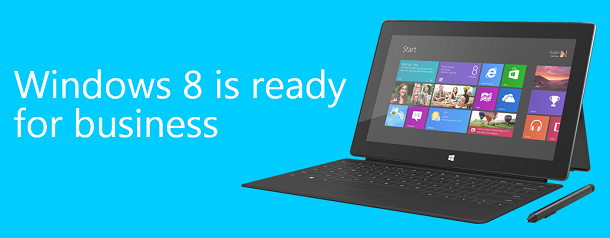Will Windows 8 garner any enterprise traction?

Windows 8 has largely been a no-show in the enterprise beyond pilots and limited rollouts.
According to data from SysAid Technologies, which provides IT service management software, 0.53 percent of its enterprise customers are running Windows 8 through April. Six months after the launch of Windows 7, SysAid saw 11.3 percent running that operating system. SysAid's data is based on 2,000 organizations globally.

Windows 8 adoption has been closely watched on the consumer front with data from Net Applications getting a lot of play. In corporations, SysAid found that less than 12 percent were using Windows 8 and of that sum the majority of them had it installed on less than 10 percent of their machines.
Debate: Can Windows 8.1 re-start Windows 8? | New usage stats show Windows holding steady as PC sales drop | A closer look at what's new in Windows 8.1
The reality is that Windows 8 may never garner enterprise interest. Among the moving parts:
- Companies have recently upgraded to Windows 7 and the enterprise upgrade cycle to that OS is still going.
- Windows 8 is a different animal and unless your company is looking to standardize PCs and tablets on one platform the value is questionable.
- Cloud computing negates the OS to a large degree since many corporate applications such as Salesforce.com, Workday and increasingly SAP and Oracle are accessed via a browser.
- When you consider that some companies inexplicably are running on Windows XP the next stop for enterprises may be Windows 9 or Windows 10.
- Bring your own device policies has diversified the OS base in companies so uber Windows upgrades may become less important.
Speaking at a recent investment conference, HP CEO Meg Whitman summed up the enterprise PC cycle well.
On PCs, if you narrowly define the market as PCs, I think there is a lots of debate about what this looks like. Is it the Draconian continued at minus 14% scenario? Is it sort of minus 6% to 7% or does it start to flatten out? My view is it is probably the middle, that it is a declining market. But we think about this business not as a PC business but as a Personal Systems business and we have called it the Personal Systems Group for a long time. I don't know that we acted on that business definition as aggressively as we should have, but we are moving now aggressively to mobile, to multi-OS, multi-architecture strategy as fast as we can get there.
And so the growth in that business will be determined on how well we get into these new categories of multi-OS, multi-architecture, and then is it the Draconian PC decline or is it a more modest decline? My personal view is that this will be more modest for a couple of reasons. One is, there is 140 million laptops out there that have not been upgraded in four years. Eventually something will happen to those devices. Either they will all move to tablets or they will move to a hybrid, which we are betting on heavily which is all laptops, all tablets, all in one like our ENVY x2. And we are obviously going to be in the tablet business as well.
So and then there is, of course, on the commercial side, the XP upgrade. Remember XP moves its support from Microsoft, I think it is February of next year and a lot of businesses are -- 40% of enterprise and small business customers still run XP. They're going to have to figure out what they are going to do. Either they are just not going to pay for maintenance and let us lapse or they are going to upgrade.
Read this
Now the wild card is whether the commercial upgrade goes to Windows 7 or Windows 8. Based on the current market, Windows 7 is likely to be the winner.
Dell CFO Brian Gladden said last month on the company's earnings conference call.
I think the data would suggest there's still a significant Win 7 refresh opportunity over the next year, really, until XP is retired. We look at that, and our discussions with customers, in many cases, they've pushed those decisions out. They are catching up now and have to get that done in the next year. Beyond that, obviously it becomes a broader opportunity around touch and how that plays out in the corporate customer base. Whether it's tablets or whether it's the next generation Windows 8 kinds of devices. Again, it's really up to us to create that opportunity and that ecosystem to drive that growth going forward with great products and great technology there. I think that's clearly something we are watching. And it was, for us, as we headed into the new budget your for corporate customers, something we expected to see was some of that Windows 7 work had to happen. And we are starting to see some of that.
Given those comments SysAid's statistics aren't that surprising. It may be another 18 months before Windows 8 shows any enterprise mojo.